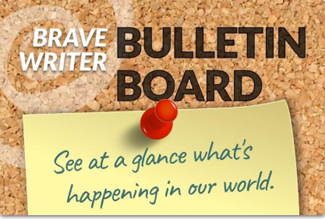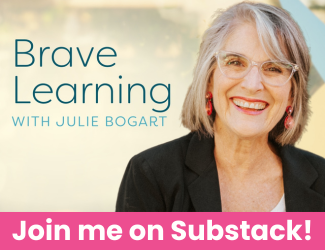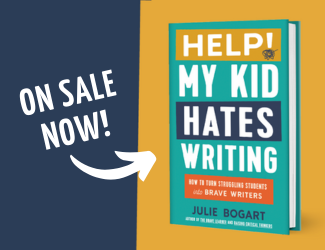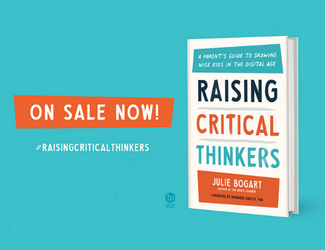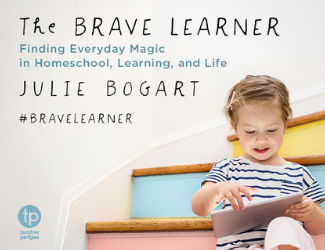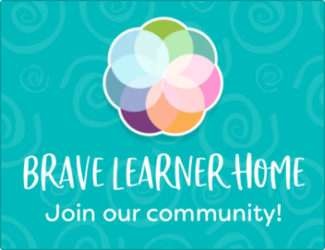
[Podcast #294] Make Grammar, Punctuation, and Spelling Stick—with Books!
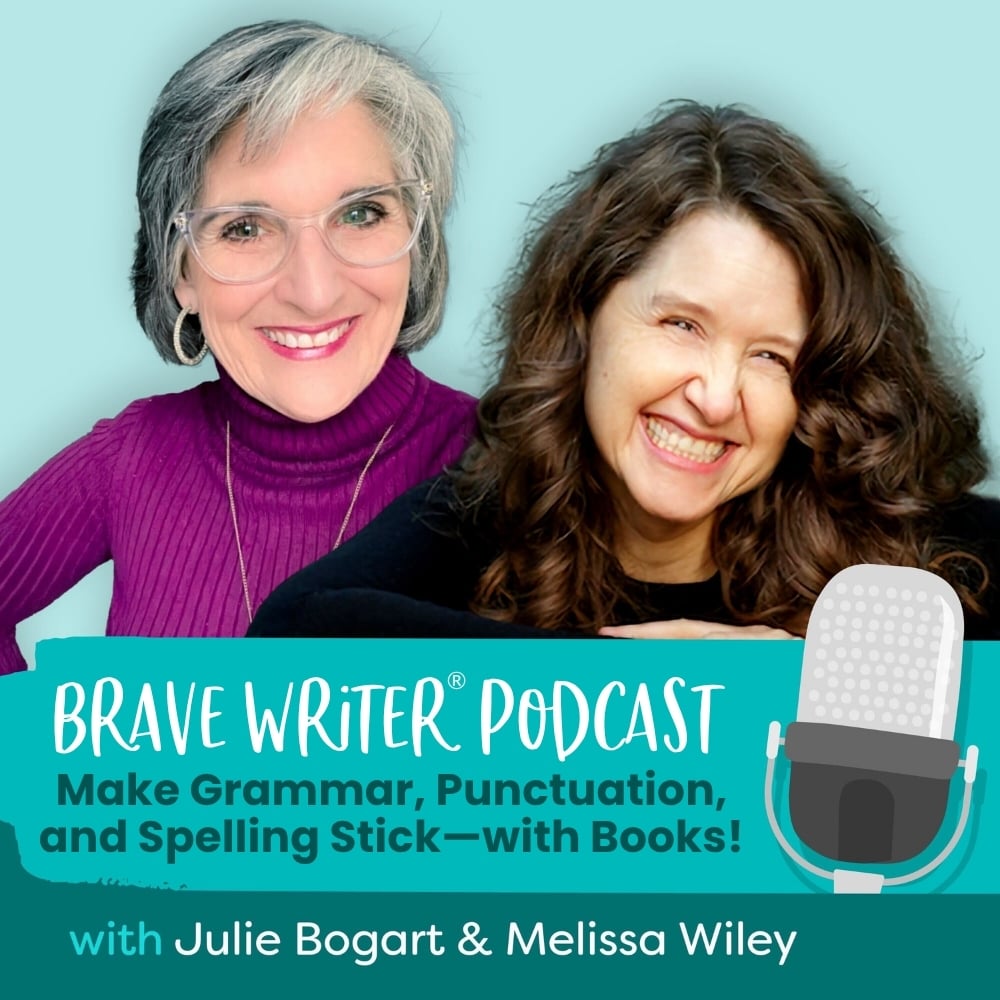
Do you ever wonder why some learning experiences “stick” while others fade away?
In this Brave Writer podcast episode, we explore how grammar, punctuation, and spelling can come alive through brief, meaningful conversations and playful discovery—far from the world of endless worksheets.
We discuss:
- the power of “quick dips” in learning,
- the magic of using favorite books as a playground for curiosity,
- and the importance of connection in helping knowledge grow naturally.
By making room for authentic curiosity and everyday conversations, we can nurture a love of language that lasts. Tune in for practical ideas and a refreshing perspective on making language arts meaningful at home.
Show Notes
Learning Happens in Relationship
At the heart of meaningful learning is relationship. Our children learn not only through materials but through the time and attention we offer them. Just as they picked up skills like eating with utensils or brushing their teeth through countless small interactions—not formal lessons—so too can they absorb the mechanics of writing and language. These “two-minute drills” scattered throughout the day do more than you might think, laying a foundation that lasts a lifetime.
Quick Dips Over Deep Dives
There’s a common belief that mastery comes from hours of drills or intensive lessons, especially in subjects like grammar. But research tells us that a child’s attention span is, at best, their age plus a minute. The magic often happens in “quick dips”—short, focused bursts of conversation and discovery. Two minutes spent discussing a comma, an unusual word, or the punctuation in a favorite book passage can be far more effective than an hour spent on worksheets. These brief but regular dips build knowledge naturally, bit by bit, making learning feel less like a chore and more like an adventure.
Using Literature as Our Playground
When we use books our children love as the starting point, we transform grammar and punctuation from abstract concepts into meaningful experiences. Every passage in a book—whether chosen at random or with purpose—becomes a treasure trove of questions: What words stand out? What punctuation marks shape the meaning? What mood does this passage create, and how does the author achieve that? We invite our children to notice, to wonder, and to play detective with language. Even a disliked passage can become a “level up” challenge in critical thinking!
Authentic Curiosity Fuels Growth
Children are naturally driven to explore the things that interest them. When learning feels personal, they are willing to push through challenges, take breaks and return, or even ask for help when needed. The same persistence and creativity they use to master skills like roller skating or coding can be harnessed for language, spelling, and writing—if we let curiosity lead the way.
Every Conversation Counts
We don’t need to save our best questions for “school time.” Discussions about language can happen at the dinner table, during car rides, or while brushing teeth. The aliveness of these moments—their spontaneity, their relevance to our actual lives—helps make learning meaningful and memorable. Instead of seeking out the perfect program, we focus on building a family culture where books, words, and ideas are woven into our days.
The Brave Writer Approach
Our mission is to support families in bringing this kind of living, connected learning to life. Through our programs and resources, we offer not just content, but discussion questions and strategies to turn any book, passage, or even billboard into a learning opportunity. The goal isn’t to produce perfect grammar for the sake of a test, but to help our kids discover how language creates worlds, sparks imagination, and gives voice to who they are.
Let’s keep looking for the moments when learning feels alive—and trust that it’s in these small, joyful interactions that true understanding is born.
Resources
- Sign up for our free Brave Writer Summer Camp!
- Don’t miss the replays of our confetti-filled book reveals that kick off a year of reading, learning, and connection! Tune in here: bravewriter.com/landing/book-reveal
- Purchase Julie’s new book, Help! My Kid Hates Writing!
- Check out Julie’s new author website: juliebogartwriter.com
- Subscribe to Julie’s Substack newsletters: Brave Learning with Julie Bogart and Julie Off Topic
- Try out our Brave Writer Practice Pages
- Learn more about the Brave Writer Literature & Mechanics programs
- Read all Brave Writer class descriptions
- Start a free trial of CTCmath.com to try the math program that’s sure to grab and keep your child’s attention
- Sign up for our Text Message Pod Ring to get podcast updates and more!
- Send us podcast topic ideas by texting us: +1 (833) 947-3684
Connect with Julie
- Instagram: @juliebravewriter
- Threads: @juliebravewriter
- Bluesky: @bravewriter.com
- Facebook: facebook.com/bravewriter
Connect with Melissa
- Website: melissawiley.com
- Substack: melissawiley.substack.com
- Instagram: @melissawileybooks
- Bluesky: @melissawiley.bsky.social
Produced by NOVA
It All Fits Together
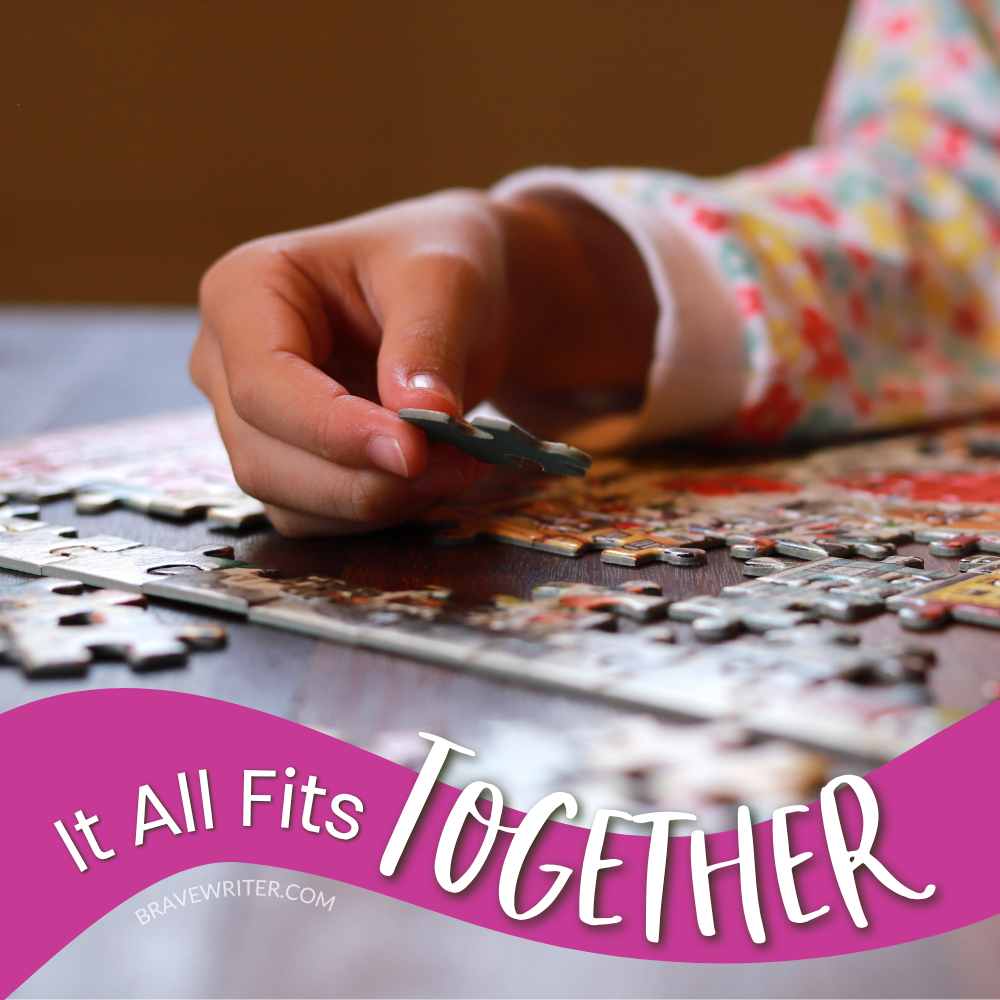
We always think we know who our kids are. Then they go do something we could never have imagined.
One day we turn around and realize that they are who they always were and we see how it all fits together. At least that’s how it appears to me on this side of it.
Thought Exercise
Identify one way you’re different than your parents expected, but that also makes sense of who you’ve always been. I think it would be fun to think about that.
My parents thought I would for sure be an actress! Maybe I’d write a little too. Full circle: the internet (didn’t even exist back then) gave me the chance to do both on my terms!
So stay curious.
Trust the process.
You’ve got this!
This post was originally shared on Instagram.
Watch the accompanying reel for more.
Brave Learning: Do Students Need to Study Literature?
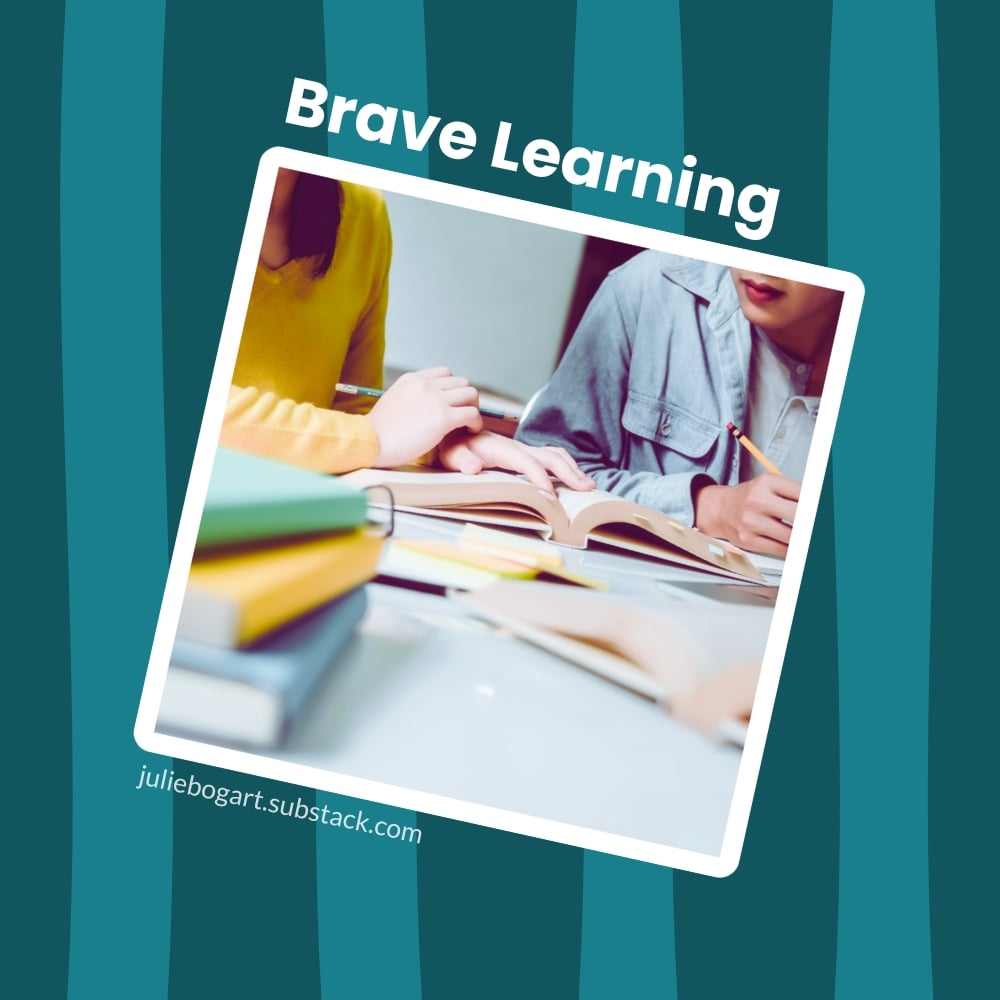
Recently on Brave Learning…
Do Students Need to Study Literature?
And if so, how do we make it as painless as possible?
The study and analysis of literature is intended to give students a lens into the ideas and stories that shape society (present and past) as well as to expose them to the complexity of human development, through time.
All sorts of fiction genres create scaffolding for:
- philosophies,
- ideologies,
- the politics of relationships,
- the exploration of the logical end of imagined scenarios,
- the psychology behind particular actions and events, and more.
Literature also exposes students to uses of language not available in nonfiction, and creates a series of cultural touchstones for shared understanding that transcend mere fact.
In short, literature provides an avenue of expanded imagination and language for the sake of both appreciating beauty and human depths, while sharing the experience with other readers (creating a kind of connection and community through shared story). We consider the reading of literature to be one of the ways we create societal cohesion! But do students HAVE to study it? [More]
Subscribe to Brave Learning on Substack where we chat, discuss, problem-solve, and create together. Here’s what you can expect: weekly themed content, freewriting prompts, and a podcast for kiddos called Monday Morning Meeting (first 6 are free)!
[Podcast #293] Julie Changes Her Mind About AI
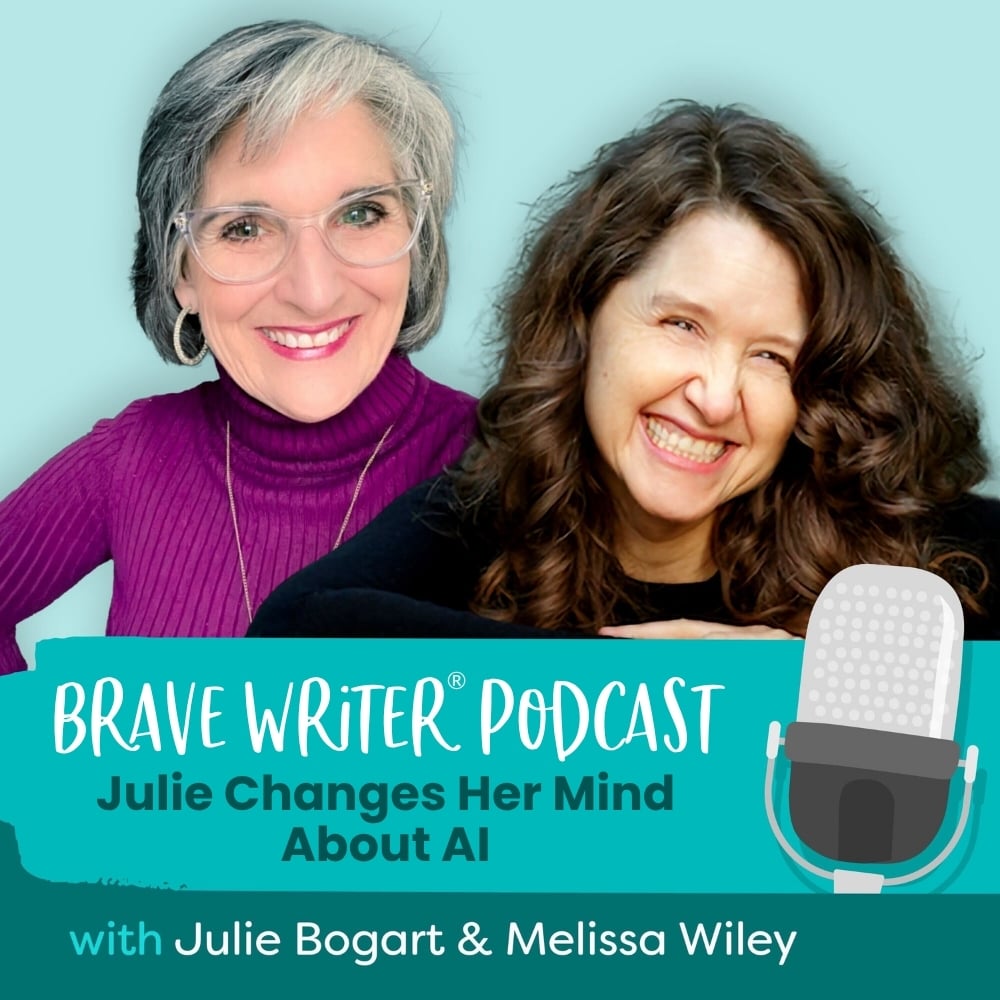
Do we still need human storytellers in an age where technology can generate stories and essays with a click? This Brave Writer podcast episode explores why nothing can replace the warmth and connection that come from sharing stories aloud as a family.
We talk about:
- the generational bonds formed through storytelling,
- the irreplaceable value of reading aloud,
- and how these practices create both readers and resilient human beings.
We also reflect on our evolving feelings about artificial intelligence—how it can be both fascinating and unsettling—and why human relationships and creative self-expression must remain at the heart of education.
Show Notes
Our world is changing rapidly, especially when it comes to how we encounter stories, creativity, and even the written word. As new tools like artificial intelligence make their way into our lives, it’s easy to wonder: do we still need human storytellers? At Brave Writer, we’ve seen firsthand that nothing can replace the unique, connective power of sharing stories and reading aloud together as a family.
The Power of Family Storytelling
Gathering together to share stories—whether around a campfire or at bedtime—builds lasting bonds between family members. We’ve watched children, even as young as five, sit spellbound as parents, grandparents, and siblings take turns spinning tales. These moments don’t just entertain; they shape who our children become. When families create a culture of storytelling, they’re laying the foundation for a lifelong love of:
- reading,
- writing,
- and imaginative thinking.
Storytelling is far more than a way to pass time. It is a practice that stretches back to the earliest days of human history, shaping moral imagination and cultural identity. Through storytelling, we invite our children into a larger conversation—one where their voices matter, and where the family story grows richer with every contribution.
Reading Aloud: The Heartbeat of Connection
In our experience, reading aloud is at the core of meaningful family life. It’s a tradition that predates even our own homeschooling journeys. Some of us began by reading childhood favorites to our spouses, then carried that ritual forward with our kids—long after they could read on their own. Even teenagers find themselves drifting back to listen when a beloved book is being read in the hallway.
Reading aloud bridges generations, brings comfort, and cultivates curiosity. It’s not just an educational strategy—it’s a way to invite everyone, from toddlers to teens, into a shared literary world. This daily routine builds not only readers but human beings who feel connected, valued, and seen.
The Challenge of AI in Education and Creativity
With the rapid evolution of artificial intelligence, especially large language models, we’re seeing a profound shift in the landscape of writing and art. Initially, some of us were technological optimists, eager to explore the potential of these tools. But over time, our optimism has grown more cautious as we’ve watched AI-generated content replace the creative labor of real people, sometimes without credit or consent.
We’re increasingly concerned that AI—especially when used uncritically in education—might erode both the motivation to create original work and the vital human relationships at the core of learning. When students outsource their self-expression to a machine, or when families rely on generic content instead of their own stories, something irreplaceable is lost.
The Irreplaceable Value of Human Connection
No algorithm can replicate the magic of a parent reading to a child, the warmth of a shared laugh, or the spontaneous creativity that bubbles up during a family storytelling night. Even as technology advances, we believe it’s essential to keep these human traditions alive. It’s in these moments of connection, not automation, that true learning and growth take place.
So as the world races forward, let’s remember to slow down and savor the irreplaceable gift of telling our own stories, in our own voices, to the people we love most.
Resources
- Don’t miss the replays of our confetti-filled book reveals that kick off a year of reading, learning, and connection! Tune in here: bravewriter.com/landing/book-reveal
- Purchase Julie’s new book, Help! My Kid Hates Writing!
- Check out Julie’s new author website: juliebogartwriter.com
- Subscribe to Julie’s Substack newsletters: Brave Learning with Julie Bogart and Julie Off Topic
- Try out our Brave Writer Practice Pages
- Learn more about the Brave Writer Literature & Mechanics programs
- Read all Brave Writer class descriptions
- Read Diabolus Ex Machina by Amanda Guinzburg
- Start a free trial of CTCmath.com to try the math program that’s sure to grab and keep your child’s attention
- Sign up for our Text Message Pod Ring to get podcast updates and more!
- Send us podcast topic ideas by texting us: +1 (833) 947-3684
Connect with Julie
- Instagram: @juliebravewriter
- Threads: @juliebravewriter
- Bluesky: @bravewriter.com
- Facebook: facebook.com/bravewriter
Connect with Melissa
- Website: melissawiley.com
- Substack: melissawiley.substack.com
- Instagram: @melissawileybooks
- Bluesky: @melissawiley.bsky.social
Produced by NOVA
An Idyllic Childhood
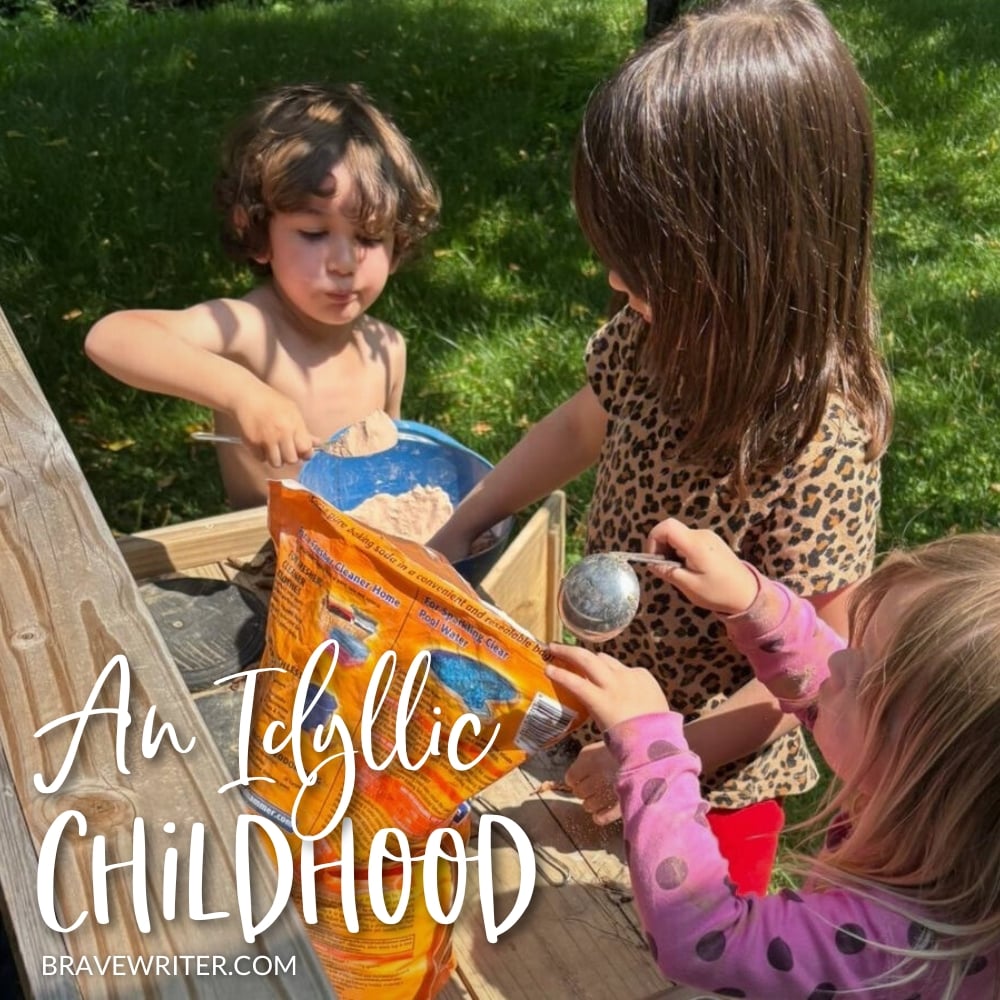
I’m thinking a lot about the craving to provide an idyllic childhood—the notion that we can somehow avoid the slings and arrows of this life on behalf of our children. We:
- picture them happily tramping through mud in a forest.
- imagine them playing without prompting, using hand crafts and art supplies.
- hope they care more about reading a book than watching TV.
- dream of contentment and creativity, rather than restlessness and boredom.
- want natural learning (that doesn’t require workbooks!) that the child values.
To create a childhood that includes nature, the arts, crafts, reading, and an appetite to learn requires an involved parent or adult. Kids can’t shop for craft supplies. They can’t walk in the woods alone (usually). They don’t have books unless someone takes them to the library. They aren’t aware of all they could learn unless they are exposed to topics unfamiliar.
How do they get these? Some person—someone—has to participate with them on some level.
Lately, the conversation I am having with parents goes something like this:
I would love my child to have that homeschool life you are describing. But I don’t think I can do it. I don’t the have (time, money, patience, creativity) to do it myself!
We all want things for our kids but then we are timid to become the learners we envision our children becoming!
To homeschool means that you will:
- tramp through the mud in a forest with your children
- play with your children without prompting, pulling out art supplies and craft materials, and exploring them together
- read a book instead of watching TV or listening to a podcast because you value reading
- find contentment for yourself, test your own creativity, rather than giving in to restlessness and boredom and the endless trap of “productivity”
- learn more about children and learning because you want not, not because you have to
The life we want for our children can also be ours. Homeschooling can be, without a doubt, one of the richest pathways to wholeness and profound learning for you, not just your children.
You really can do this. Millions of us have. And so many parents work while providing this childhood for their kids.
I’m here to help and so is all of Brave Writer!




















